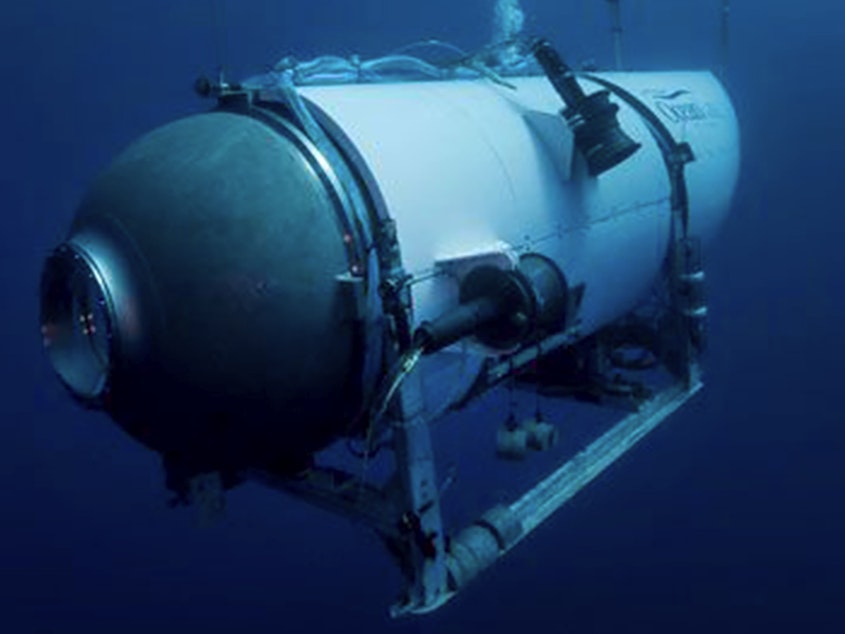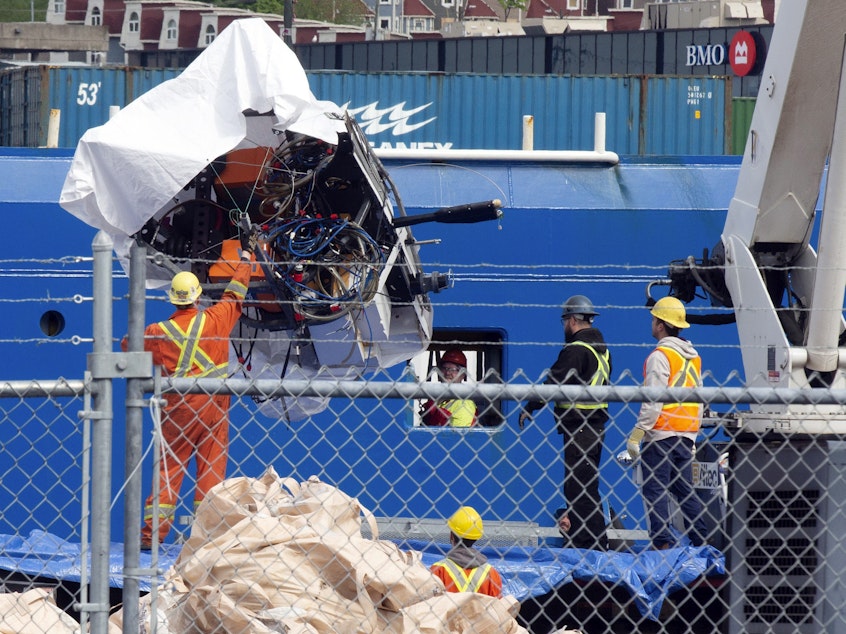Why didn't OceanGate's CEO heed warnings before the fatal Titan sub implosion?

It’s been a year since a Washington-made sub imploded on a dive to explore the wreck of the Titanic, killing all five people on board, including Stockton Rush, the founder and CEO of OceanGate.
Now, an investigative report in WIRED magazine details questionable decisions made by Rush in the years leading up to the Titan disaster.
The report suggests that several Washington-based organizations were more involved in the testing, planning, and construction of the sub than they initially let on. The report also found that Rush ignored numerous warnings that his experimental carbon-fiber and titanium sub was not safe for repeated deep-water dives.
WIRED examined tens of thousands internal OceanGate emails, photos, and memos as part of its investigation. The documents show that Rush had received several warnings questioning the ability of the Titan sub to survive at extreme depths.
Investigative reporter Mark Harris said the final version of the sub was untested to the depths required to visit the Titanic shipwreck, at the bottom of the Atlantic, 3,800 meters or 2.36 miles down.
Sponsored

“The fact that it was never tested in the configuration it dove in, it certainly set some red flags to engineers that were talking about that and thinking about the vessel,” he said.
Another potential factor in the crash was the use of carbon-fiber for constructing the hull. While steel has undergone deep-water tests, the behavior of carbon fiber when under extreme external pressure hasn’t been studied extensively. He also said carbon fiber tends to weaken over time.
“All materials can weaken over time, but metals are very well understood about how they respond to pressure,” Harris said. “Carbon fiber, less so, particularly the pressure that it can get under water.”
RELATED: James Cameron says the Titan passengers probably knew the submersible was in trouble
Sponsored
Harris said Rush was confident that an acoustic monitoring system installed in the Titan would be able to listen for cracks in the carbon fiber and to warn the monitoring ship on the surface if the sub was starting to fail.
“Because there was so much uncertainty, he would put all his certainty in this monitoring system and say, ‘We’re going to know when it gets really bad. We’re going to know when it’s time to come up,’” Harris said.

The WIRED investigation showed that both the University of Washington and Boeing were more involved in the OceanGate project than they suggested after the crash. UW was the site of multiple scale model tests, though a former OceanGate employee told Harris that the University of Washington's hardware or software work didn't end up in the Titan.
Two Boeing engineers consulted extensively with Rush and OceanGate throughout the process. One of those Boeing engineers, Mark Negley, wrote to Rush that the Titan's carbon-fiber hull had “a high risk of significant failure at or before you reach 4,000 meters.”
Sponsored
His report included a chart with a red line and a skull and crossbones when the sub went below 4,500 meters.
RELATED: OceanGate suspends its commercial and exploration operations after Titan implosion
Harris said that Rush, who he met in 2015 and accompanied on a test dive in Elliott Bay, felt that a lot of the warnings he received, from both inside OceanGate and from Titan contractors, were from people being overly cautious who were stymying his efforts with unnecessary red tape. He called Rush “the Elon Musk of the ocean.”
“He wasn’t irrational,” Harris said. “He just thought everyone was being overcautious and that his solutions weren’t shortcuts. They were just solutions.”

Sponsored
After experiencing a crack in the Titan hull after several test runs, Rush had a new hull made by two Washington-based companies, Electroimpact, an aerospace engineering manufacturer based in Mukilteo, and Janicki Industries, based in Skagit County.
Electroimpact laid the carbon fibers and Janicki cured the material in its ovens. Two scale models tested at the UW both imploded. The process was altered, and the hull passed pressure testing at a facility in Maryland.
On June 18, 2023, five people boarded the Titan to descend to the Titanic — Rush, deep-sea explorer Paul-Henri Nargeolet, businessman Hamish Harding and Shahzada Dawood and his 19-year-old son Sulaiman. The support ship lost contact with the sub less than two hours after it began its descent.
A massive rescue mission ensued that captured worldwide attention as the hours ticked by, before wreckage was discovered and it became clear that the sub had imploded, instantly killing Titan's passengers and crew.
After the disaster, former OceanGate employees said they were neither shocked nor surprised. Two of those employees described the sub as “a ticking time bomb,” according to WIRED.
RELATED: A year after the Titan submersible implosion, investigators still don't have answers
Sponsored
One year later, a multinational investigation led by the U.S. Coast Guard into the exact cause of the Titan crash is ongoing. Harris said it could be several months to a year before that investigation is completed. But he said, in a way, the findings don’t matter.
“We already know what the problem was,” he said. “The problem was just the way the company was operating in terms of building and testing that vessel was not acceptable for the mission it had to do.”
To listen to the full conversation with WIRED reporter Mark Harris on Soundside, hit play on the button at the top of the story or tap here.






